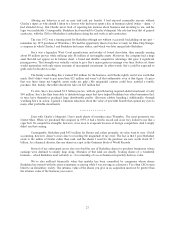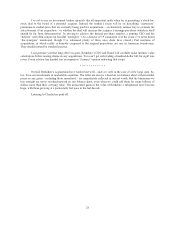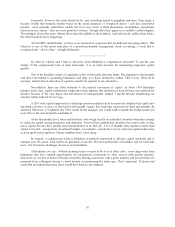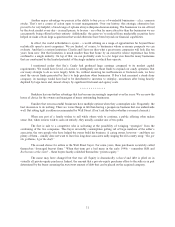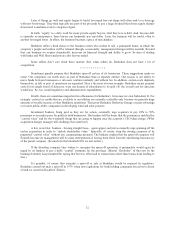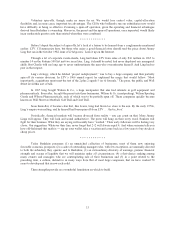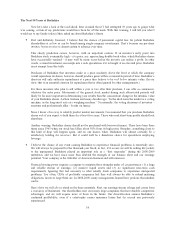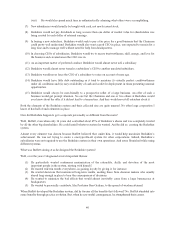Berkshire Hathaway 2014 Annual Report Download - page 32
Download and view the complete annual report
Please find page 32 of the 2014 Berkshire Hathaway annual report below. You can navigate through the pages in the report by either clicking on the pages listed below, or by using the keyword search tool below to find specific information within the annual report.Eventually, however, the clock struck twelve, and everything turned to pumpkins and mice. Once again, it
became evident that business models based on the serial issuances of overpriced shares – just like chain-letter
models – most assuredly redistribute wealth, but in no way create it. Both phenomena, nevertheless, periodically
blossom in our country – they are every promoter’s dream – though often they appear in a carefully-crafted disguise.
The ending is always the same: Money flows from the gullible to the fraudster. And with stocks, unlike chain letters,
the sums hijacked can be staggering.
At both BPL and Berkshire, we have never invested in companies that are hell-bent on issuing shares. That
behavior is one of the surest indicators of a promotion-minded management, weak accounting, a stock that is
overpriced and – all too often – outright dishonesty.
************
So what do Charlie and I find so attractive about Berkshire’s conglomerate structure? To put the case
simply: If the conglomerate form is used judiciously, it is an ideal structure for maximizing long-term capital
growth.
One of the heralded virtues of capitalism is that it efficiently allocates funds. The argument is that markets
will direct investment to promising businesses and deny it to those destined to wither. That is true: With all its
excesses, market-driven allocation of capital is usually far superior to any alternative.
Nevertheless, there are often obstacles to the rational movement of capital. As those 1954 Berkshire
minutes made clear, capital withdrawals within the textile industry that should have been obvious were delayed for
decades because of the vain hopes and self-interest of managements. Indeed, I myself delayed abandoning our
obsolete textile mills for far too long.
A CEO with capital employed in a declining operation seldom elects to massively redeploy that capital into
unrelated activities. A move of that kind would usually require that long-time associates be fired and mistakes be
admitted. Moreover, it’s unlikely that CEO would be the manager you would wish to handle the redeployment job
even if he or she was inclined to undertake it.
At the shareholder level, taxes and frictional costs weigh heavily on individual investors when they attempt
to reallocate capital among businesses and industries. Even tax-free institutional investors face major costs as they
move capital because they usually need intermediaries to do this job. A lot of mouths with expensive tastes then
clamor to be fed – among them investment bankers, accountants, consultants, lawyers and such capital-reallocators
as leveraged buyout operators. Money-shufflers don’t come cheap.
In contrast, a conglomerate such as Berkshire is perfectly positioned to allocate capital rationally and at
minimal cost. Of course, form itself is no guarantee of success: We have made plenty of mistakes, and we will make
more. Our structural advantages, however, are formidable.
At Berkshire, we can – without incurring taxes or much in the way of other costs – move huge sums from
businesses that have limited opportunities for incremental investment to other sectors with greater promise.
Moreover, we are free of historical biases created by lifelong association with a given industry and are not subject to
pressures from colleagues having a vested interest in maintaining the status quo. That’s important: If horses had
controlled investment decisions, there would have been no auto industry.
30









